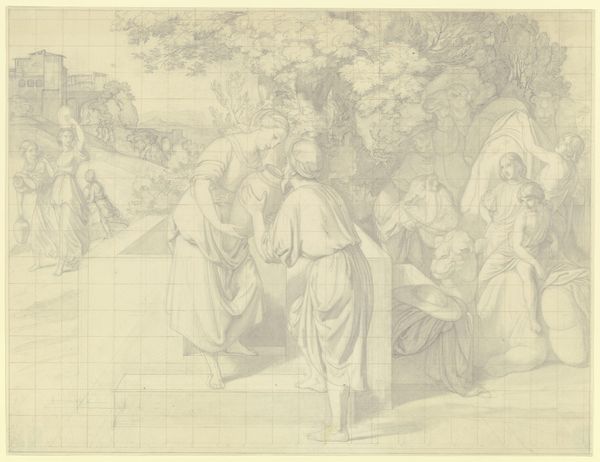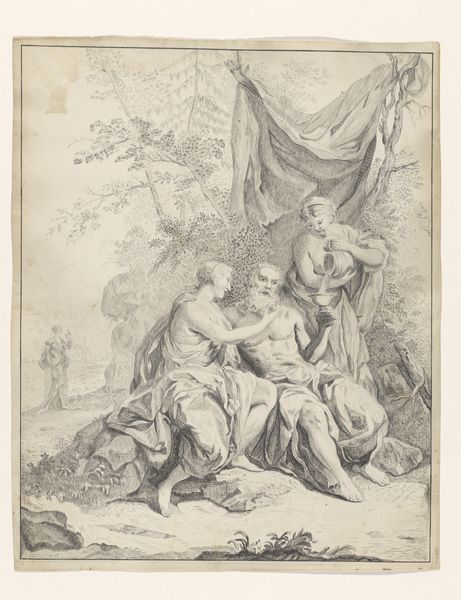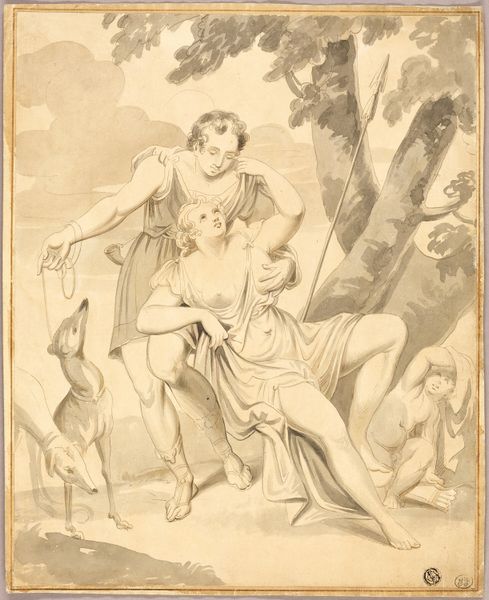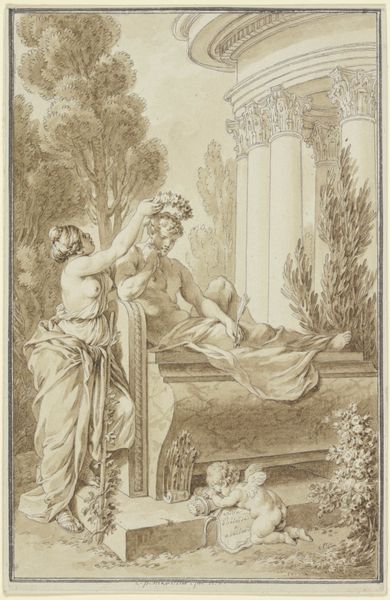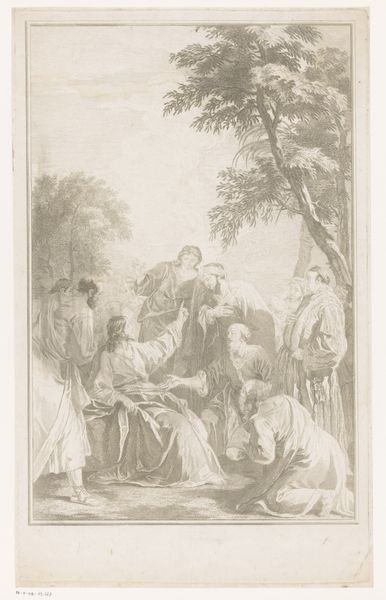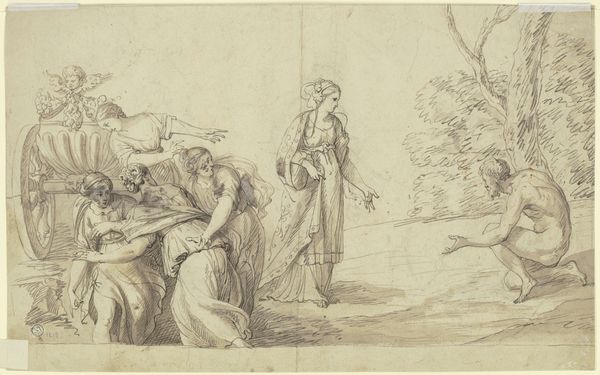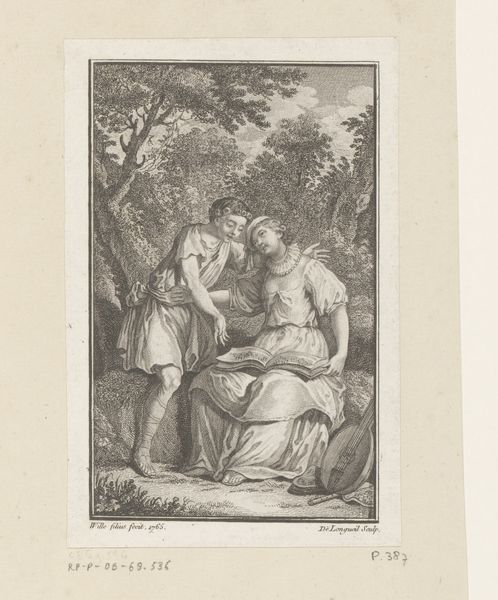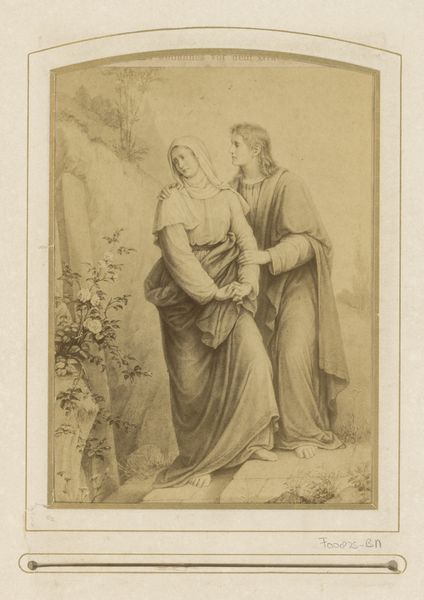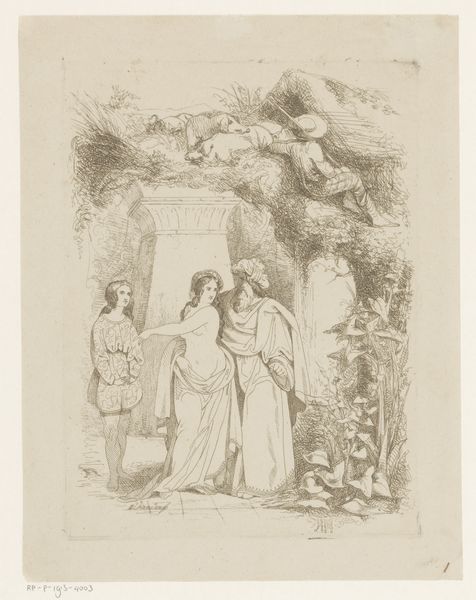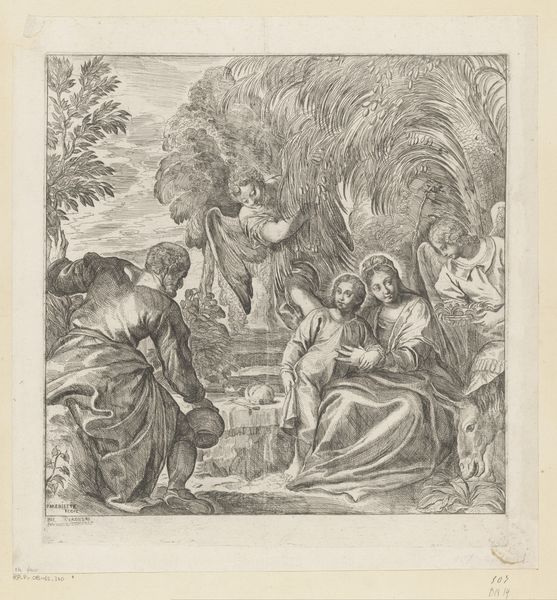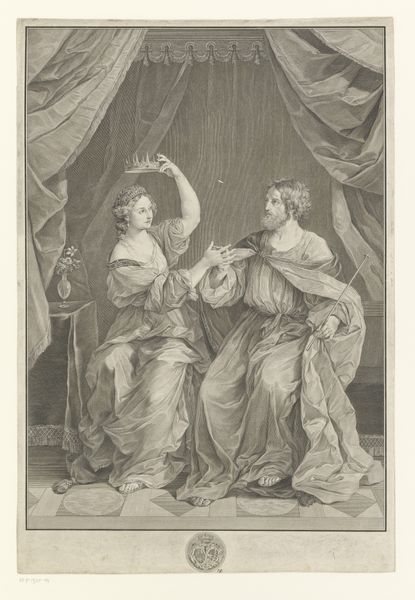
drawing, paper, pencil
#
portrait
#
pencil drawn
#
drawing
#
landscape
#
figuration
#
paper
#
pencil drawing
#
romanticism
#
pencil
#
portrait drawing
#
history-painting
#
academic-art
Copyright: Public Domain
Curator: Welcome. Before us is "Dante meets Beatrice," a pencil drawing currently held at the Städel Museum, attributed to Gustav Heinrich Naeke. Editor: There’s a dreamlike quality to it, a soft focus that blurs the edges. It feels both ethereal and unfinished. The use of delicate shading gives the figures a weightless appearance. Curator: Absolutely. Naeke, working within the Academic and Romantic traditions, captured the idealized visions of history popular in his time. Drawings like these offered artists a way to explore narratives steeped in classical themes and morality. Think of the rising bourgeois public of the 19th century who sought artistic expressions to express their place within this history. Editor: And isn't Dante's encounter with Beatrice in "La Vita Nuova" ripe with allegorical significance? She’s more than a woman; she’s a symbol of divine love and virtue. But it's also interesting to note which encounters we chose to celebrate from "Inferno". Curator: Precisely! By emphasizing the theme of ideal, spiritual love, this choice sidesteps the critiques of religious and political figures in Dante's writings that might make them a sensitive subject. The political implications were a question. This narrative provided an acceptable form of idealism to put on display. Editor: It brings up the whole question of how we remember and who gets remembered. Where is the focus? And what did Romantic artists think they gained from revisiting Dante? Was it an attempt to reclaim authority? The depiction suggests not just admiration, but almost possession. Curator: Indeed. The Romantic painters's interpretation of Dante can be seen as the appropriation and use of the medieval aesthetic to legitimize particular social and political points. By using "historical" imagery, the artwork itself reinforces notions of legitimacy. Editor: So, what began as what appears to be an innocent tribute is, in fact, part of a more involved history, an intricate interplay of artistic selection, the power structures inherent in art portrayal, and historical context. This work demonstrates that even a delicate drawing is more than it initially seems. Curator: A perspective which hopefully adds another dimension to your appreciation of Naeke's drawing and the era from which it came. Editor: Indeed, prompting us to ask—who has access to this narrative, and whose perspective prevails?
Comments
No comments
Be the first to comment and join the conversation on the ultimate creative platform.
